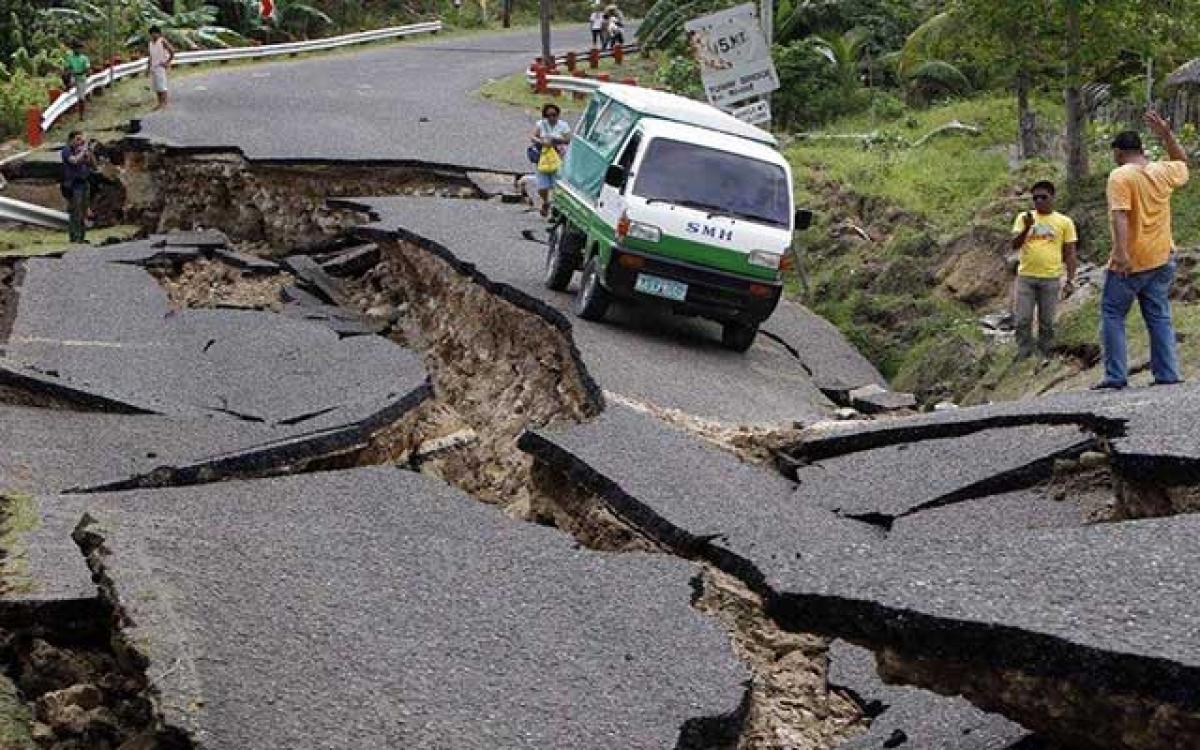Live
- Rajadhiraaj: Love. Life. Leela
- Students immerse in nature in Chilkur forest
- Sri Aurobindo’s vision: Bridging the gap for holistic human evolution
- Sri Radha Govinda Ratha Yatra conducted
- A feast of music, dance and drama
- Mohan Babu denies absconding amid legal controversy
- Swift City to boost industrial growth in Bengaluru
- Allu Arjun walks out free after spending night in jail
- Congress harbours no grudge against any actor: TPCC chief
- Allu Arjun meets Upendra after release from prison, wishes for his ‘UI’ film
Just In

Less than two years ago, Man Bahadur Tamang was the proud owner of a homestead and farmland in this central Nepali village. But he lost all that he had in monster landslides that swept across the steep hillside wreaking havoc in its way and claiming 156 lives.
Less than two years ago, Man Bahadur Tamang was the proud owner of a homestead and farmland in this central Nepali village. But he lost all that he had in monster landslides that swept across the steep hillside wreaking havoc in its way and claiming 156 lives.
Triggered by heavy rainfall, the massive landslides on August 2, 2014, blocked the Sunkoshi river creating an artificial lake in Sindhupalchok district and ripped a five-km portion of the Arniko Highway -- the main artery of goods and people flow to China.
Tamang lost all that he had in the landslides -- his home as well as his farmland which was his sole means of earning a livelihood.
"From a proud owner of adequate farm land, I have now become a daily wage labourer to earn my livelihood and look after my small family," said Tamang, 63, carrying a bundle of locally grown bamboo from a nearby forest on the steep slope above.
He has built a temporary shelter near the road, not far away from his original homestead that was lost in the massive landslides.
The artificial lake crated by the devastating landslides blocking the Sunkoshi river's flow submerged a hydro power plant and destroyed sections of the highway linking Nepal and China that cost the country $400,000 in trade revenue each day it remained closed for 45 days.
Downstream, it created panic and fear in Bihar after the Nepal government warned of floods if there was a sudden bursting of the artificial lake formed behind the dam.
Taking the threat seriously, the Bihar government sounded a flood alert in eight districts and started evacuating the people living along the Kosi's embankments.
Such a disaster was neither new nor the last in the Kosi river basin. In the last 50 years, at least five such disasters have affected the basin.
"The killer landslides changed the natural river flow, the landscape and farm land, not to talk about our village," said 78-year-old villager Jeet Bahadur Tamang, who lost his home in the nearby village of Mankha and all his kin in the landslides.
Dozens of houses were either buried or smashed by the landslides in Mankha.
"I have lost everything, with no one to take care of me. I am living alone in this old age... the government provides me ration to survive after the landslides," he said while drinking spring water from a tap, hardly a few metres from the debris of the landslides that still lay scattered as evidence near the Arniko highway, a road link connecting Kathmandu with the northern districts and the border with China.
Tamang said that before the landslides he was fully dependent on farming for his livelihood. "No more now, my farmland has gone in the landslide and I have to fight to survive."
He recalled that he used to harvest his crops and his traditional store made of bamboo was always full of foodgrains at home. But no more.
"Now I am a landless labourer, dependent on labour jobs in the ongoing government works...."
Tamang, along with several other families, has constructed tin and bamboo shelters and hopes that the government will build modest homes for them soon.
"The government is yet to construct homes for us and has neither provided money to survivors like us," said Lanka Lama, a young man whose family used to till its farmland for livelihood but lost everything in the landslides.
"I am working as a driver near Kathmandu and other male members of my family have also taken up jobs," said 22-year-old Lama.
Lama said many of the survivors migrated to nearby towns and some to Kathmandu in search of livelihood. "They were forced to migrate after their land was devastated by the landslides with mud burying their farmlands."
Lama's grandmother Suku Maya said: "We had to fight for survival after the landslides and are still fighting. Our future is uncertain. We are worried about our next generation as to how they would live here in fear."
Tamang said: "We still fear devastation, destruction and death. During monsoon season, our fear increased. Some officials and scientists visited this area and told us that it is not a safe zone, anything can happen any time. But we are poor people, where can we go from here?"
According to experts of Kathmandu-based International Centre for Integrated Mountain Development (ICIMOD), nearly two kilometres of soil, mud and rock, which had become loosened by the heavy monsoon rains, detached from the hillside and slid downwards towards Jure. The debris wiped out large sections of the village.
ICIMOD expert Arun B Shrestha said: "We cannot control natural hazards like landslides... but there are many things that can be done to minimise their adverse impact on lives, livelihoods and valuable infrastructure."
"More efforts to map landslide risks are needed and much more frequent monitoring of potential landslide sites is necessary."

© 2024 Hyderabad Media House Limited/The Hans India. All rights reserved. Powered by hocalwire.com







